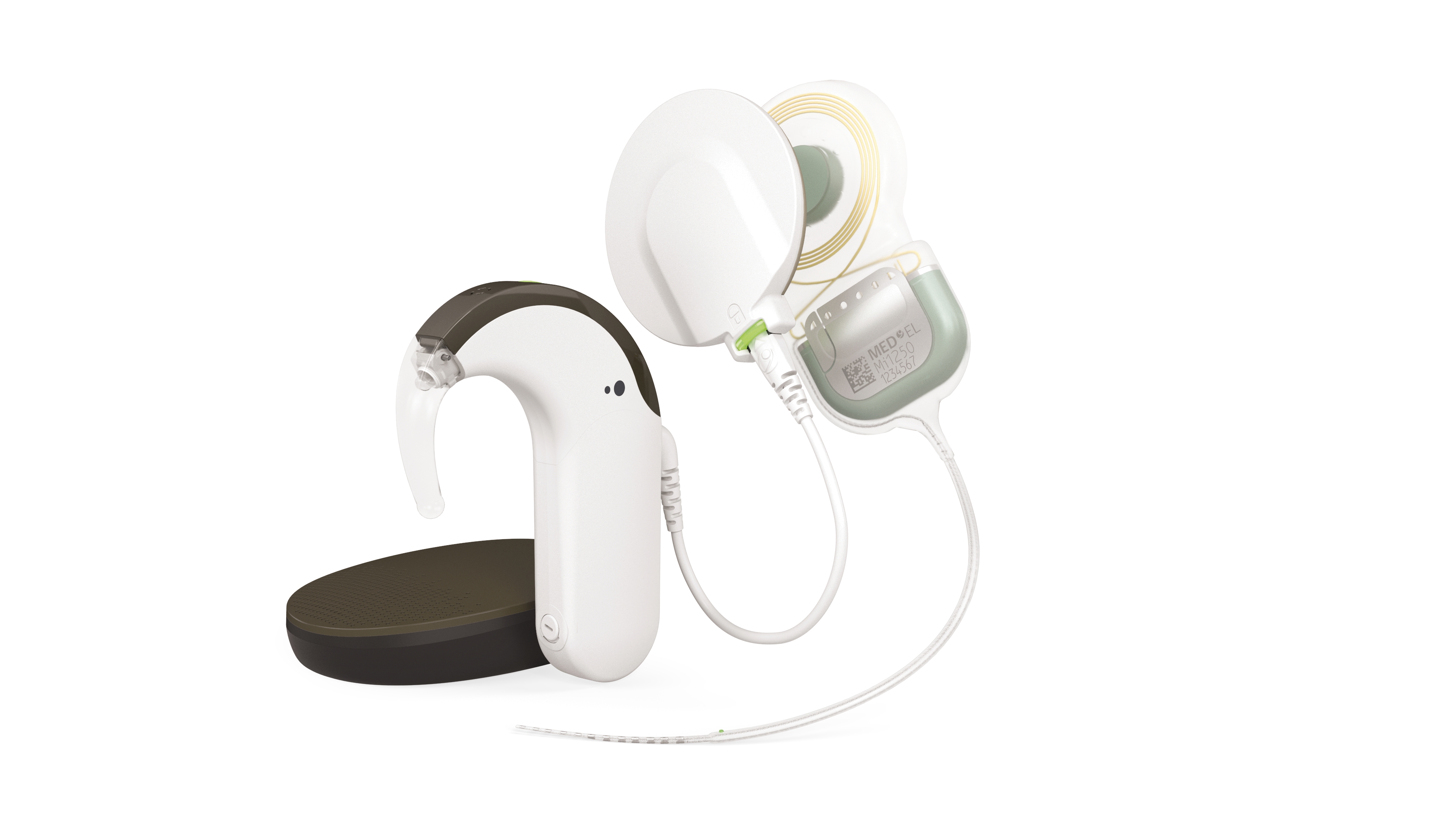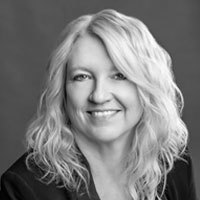A Cochlear Implant System that is Closest to Natural Hearing
AudiologyOnline: What’s unique about your hearing implant that makes it the ‘closest to natural hearing’?
Ms. Franz: Most readers have heard recipients say that a cochlear implant (CI) sounds like a cartoon character. Over time, sound quality improves, and the perceived pitch of sounds often lowers, but if the whole system is not designed to deliver a natural sound quality, it may never reach a natural sounding pitch. MED-EL’s system is designed to provide the most natural sound quality possible.
AudiologyOnline: How is it designed for natural sound?

Ms. Franz: We believe it comes down to three main things: 1) an electrode that is designed to preserve the delicate structures it intends to stimulate, 2) stimulation delivered as close as possible to the matching location in the cochlea that is naturally frequency-tuned, especially for electrodes that will deliver low pitched sounds, and 3) using a unique type of pulse that triggers a full, resonant pitch quality when targeted to the apex of the organ.
AudiologyOnline: Ok, so there are three things to think about. Help us understand the first one – the goal to preserve the structures. If CIs are for people whose cochleae don’t work properly already, why is so important to preserve the organ?
Ms. Franz: The specialized cochlear structures like the Basilar Membrane and Organ of Corti are usually still anatomically present in most candidates with sensorineural hearing loss. If the electrode damages the Basilar Membrane even a little, the fluids in the adjacent ducts can mix. If endolymph and perilymph mix, the resulting compound is toxic to nerve cells. Rates of electrode dislocation have been reported in the literature as often as 10% of insertions. Instead, MED-EL tries to preserve the neural periphery by using soft, flexible electrodes. Not only are we able to stimulate those fibers as close as possible to their natural location, but also this offers the best chance of taking advantage of future advancements that may emerge. If a recipient’s neural structures are damaged or gone after they are implanted today, future treatments that may depend on those structures being intact are unlikely to be effective for them later.
AudiologyOnline: Can you give me an example of how you know you can preserve the structures?
Ms. Franz: Sure! We can take an example from Electric-Acoustic Stimulation, or EAS. EAS is for adults with quite good low frequency hearing, but a profound high frequency hearing loss. With EAS, the goal is to insert the electrode only partway, to ‘cover’ the basal part of the cochlea that has profound loss with electrical stimulation. Then, a special audio processor that has a built-in hearing aid ‘covers’ the apical low-frequency region of the cochlea with amplification, and that’s where useable hearing likely remains if structures were preserved. Nearly all (97%) of EAS recipients were able to benefit from this approach in our clinical trial. Of course, the surgeon’s technique is also an important factor!
AudiologyOnline: But your company also believes those electrodes should be as long as possible, too. How does that help produce more natural hearing?
Ms. Franz: Exactly! CI electrodes are inserted through a tiny incision in the round window membrane, at the most high-frequency point in the duct. The electrode is carefully advanced into the scala until it reaches the point of first resistance. For traditional recipients, the goal is for the tip of the electrode to reach as far as possible into the apex of the cochlea, where the nerve fibers are specifically tuned to low frequencies. We make soft, flexible electrodes in a variety of lengths, so that each cochlea can be individually fit with the correct array size. And, we are the only company that makes electrodes the full length of the cochlea (the average cochlear duct length is ~32mm) for those with significant SNHL across the audiogram.
AudiologyOnline: But the spiral ganglion ends in the second turn of the cochlea, why does it matter if the electrode reaches farther than that?
Ms. Franz: The closer an electrode is located to the correct pitch region of the cochlea, the better the pitch ‘matches’ normal hearing. This is seen in pitch-matching studies, especially in recipients with SSD with long electrodes, where they are comparing the pitch of an electrode to normal hearing on the other side. Even recipients with bilateral profound loss can report differentiated pitch between channels in the apex. While the brain does make some adjustments over time, it can’t overcome sending low frequency information to electrodes that are located in the mid-frequency region of the cochlea; the perceived pitch will never shift enough to match what a hearing ear would perceive from the same sound. The brain can’t overcome an octave or more of pitch mismatch without the assistance of a long electrode.
AudiologyOnline: The trick is just getting the electrode to cover the whole cochlea?
Ms. Franz: That’s the first step. Once there, you can adjust the type of stimulation to target the region of low frequency nerve fibers. Normal hearing relies heavily on the phase or timing cue to resolve low frequency pitch, and we can use a special pulse type that delivers variable-rate stimulation, or fine structure coding, to the apex. This type of stimulation has been shown to preserve the full, resonant quality of low pitched sounds and especially supports positive experiences with listening to music. Fine structure coding doesn’t have the same impact on pitch when delivered to the mid and high frequency regions of the cochlea.
AudiologyOnline: So long electrodes are important if the candidate has residual hearing in the other ear?
Ms. Franz: We are the only hearing implant company who is approved for the SSD/AHL indication range, but we think it’s important for all candidates. Most candidates want to enjoy listening to music again even if they don’t have a normal ear on the other side. Research on sound coding, music appreciation, pitch, and studies with the SSD/AHL population are confirming that our foundational principles do support more natural sound quality and through that, we can uniquely target the whole organ to deliver not only good speech understanding but also a full, resonant and complete music listening experience.
AudiologyOnline: How does all you are learning help existing recipients?
Ms. Franz: At MED-EL we place a lot of importance on our ‘legacy’ recipients when we develop new products. Over time, there will surely be new technologies that older implants can’t incorporate, but we diligently try to make sure that legacy recipients can choose features or benefits useful for them as new processors and accessories are released. Looking at how a company treats their earliest recipients is a good indicator for how they will treat you going forward, because even if you get the very latest technology today, you will someday also be a ‘legacy’ recipient too!
AudiologyOnline: What should a candidate consider then, if they are looking at CI technology?
Ms. Franz: Cochlear implant technology changes relatively rapidly for the external components of the system; upgrades of audio processors and accessories are relatively easy. Changing the implant itself is a bigger proposition. Candidates should not only focus on the external parts of the system that they will be handling and wearing every day – but they should consider the important role the implant plays too, because that is what the externals will depend on to produce sound as close as possible to natural hearing for many years to come.


